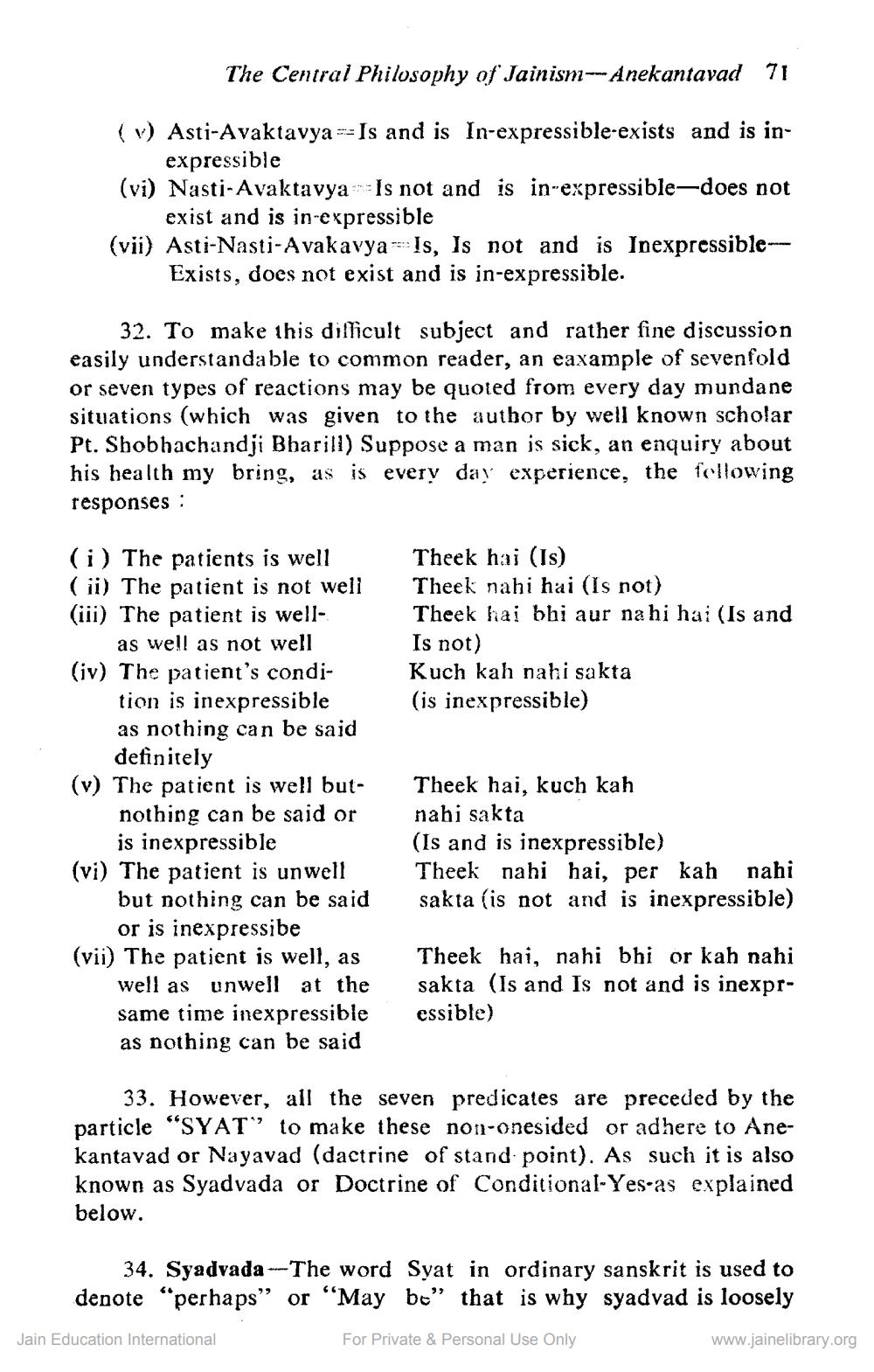________________
The Central Philosophy of Jainism--- Anekantavad 71
(V) Asti-Avaktavya=Is and is In-expressible-exists and is in
expressible (vi) Nasti-Avaktavya-Is not and is in-expressible-does not
exist and is in-expressible (vii) Asti-Nasti-Avakavya='s, Is not and is Inexpressible--
Exists, does not exist and is in-expressible.
32. To make this difficult subject and rather fine discussion easily understandable to common reader, an eaxample of sevenfold or seven types of reactions may be quoted from every day mundane situations (which was given to the author by well known scholar Pt. Shobhachandji Bharill) Suppose a man is sick, an enquiry about his health my bring, as is every day experience, the following responses :
Theek hai (Is) Theek nahi hai (Is not) Theek hai bhi aur nahi hai (Is and Is not) Kuch kah nahi sakta (is inexpressible)
(i) The patients is well (ii) The patient is not well (iii) The patient is well
as well as not well (iv) The patient's condi
tion is inexpressible as nothing can be said
definitely (v) The patient is well but
nothing can be said or
is inexpressible (vi) The patient is unwell
but nothing can be said
or is inexpressibe (vii) The patient is well, as
well as unwell at the same time inexpressible as nothing can be said
Theek hai, kuch kah nabi sakta (Is and is inexpressible) Theek nahi hai, per kah nahi sakta (is not and is inexpressible)
Theek hai, nahi bhi or kah nahi sakta (Is and Is not and is inexpressible)
33. However, all the seven predicates are preceded by the particle "SYAT" to make these non-onesided or adhere to Anekantavad or Nayavad (dactrine of stand point). As such it is also known as Syadvada or Doctrine of Conditional-Yes.as explained below.
34. Syadvada --The word Syat in ordinary sanskrit is used to denote "perhaps” or “Maybe" that is why syadvad is loosely
Jain Education International
For Private & Personal Use Only
www.jainelibrary.org




